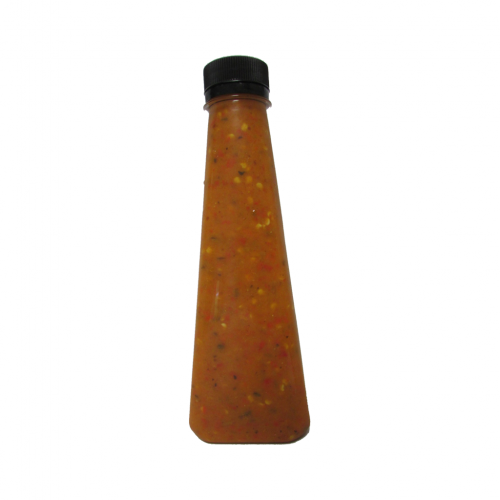-
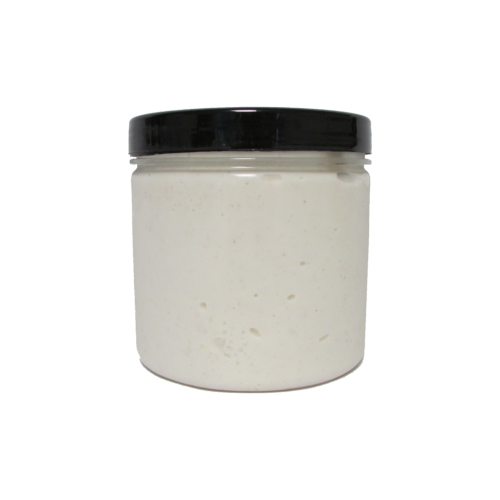
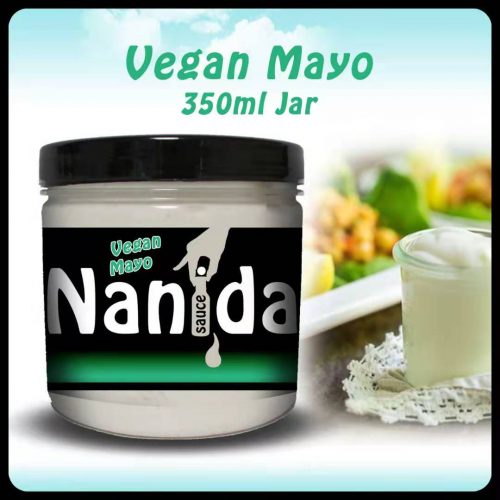 Vegenaise, shockingly, tastes better than mayo. As an added bonus, it has less saturated fat and cholesterol than the regular stuff. And while many meat substitutes have ingredient lists that read like a science experiment, Vegenaise actually has no additives or preservatives. Please ensure to refrigerate your delicious purchase the moment you receive it.
Vegenaise, shockingly, tastes better than mayo. As an added bonus, it has less saturated fat and cholesterol than the regular stuff. And while many meat substitutes have ingredient lists that read like a science experiment, Vegenaise actually has no additives or preservatives. Please ensure to refrigerate your delicious purchase the moment you receive it. -
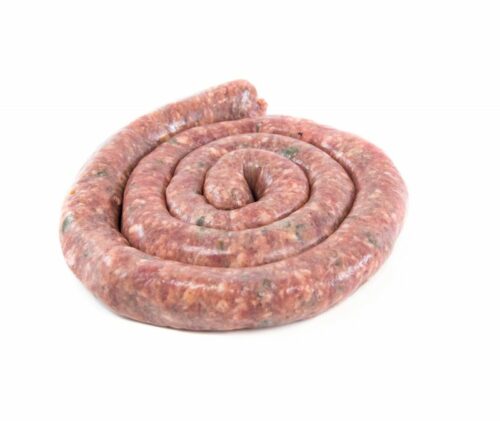 Every seventeenth-century cook at the Cape had a favourite recipe for boerewors (farmer’s sausage). During the twentieth century, many cooks began following recipes that predominantly used coriander and cloves seasoning. A possible reason for this preference might have been the Afrikaans cookbooks by Dijkman and D.J.H., which contain recipes with these spices as ingredients. It is a popular myth that boerewors was always made from a mixture of pork and other meats. Before the twentieth century when there were no fridges, boerewors prepared in summer consisted mainly of mutton and sheep’s tail fat and in winter it was made from pork and bacon. It boggles the mind that people made sausage at all without the luxury of mincing machines. The sausage meat had to be cut into very small pieces and mixed with the spices the night before. The following morning, when it was still cold, the fat or bacon was cut into cubes while the meat was finely minced with a large pestle. Then the meat and fat or bacon were mixed with vinegar and left for a while in order to absorb the spices before cleaned intestines were filled with meat. It was a huge job to scrap the intestines clean. If the one doing the scraping was clumsy, the intestines ended up with lots of holes, making them useless as sausage casings. Filling the intestines also had to be done by hand. The cheapest piece of filling equipment over which the intestines could be pulled and filled with meat stuffing was the horn of an animal. The sharp end of the horn was cut off and the horn hollowed out, rubbed and polished until smooth before it was used as a filling mechanism. After the intestines were filled, the boerewors had to be placed in brine to preserve it.
Every seventeenth-century cook at the Cape had a favourite recipe for boerewors (farmer’s sausage). During the twentieth century, many cooks began following recipes that predominantly used coriander and cloves seasoning. A possible reason for this preference might have been the Afrikaans cookbooks by Dijkman and D.J.H., which contain recipes with these spices as ingredients. It is a popular myth that boerewors was always made from a mixture of pork and other meats. Before the twentieth century when there were no fridges, boerewors prepared in summer consisted mainly of mutton and sheep’s tail fat and in winter it was made from pork and bacon. It boggles the mind that people made sausage at all without the luxury of mincing machines. The sausage meat had to be cut into very small pieces and mixed with the spices the night before. The following morning, when it was still cold, the fat or bacon was cut into cubes while the meat was finely minced with a large pestle. Then the meat and fat or bacon were mixed with vinegar and left for a while in order to absorb the spices before cleaned intestines were filled with meat. It was a huge job to scrap the intestines clean. If the one doing the scraping was clumsy, the intestines ended up with lots of holes, making them useless as sausage casings. Filling the intestines also had to be done by hand. The cheapest piece of filling equipment over which the intestines could be pulled and filled with meat stuffing was the horn of an animal. The sharp end of the horn was cut off and the horn hollowed out, rubbed and polished until smooth before it was used as a filling mechanism. After the intestines were filled, the boerewors had to be placed in brine to preserve it. -
 Every seventeenth-century cook at the Cape had a favourite recipe for boerewors (farmer’s sausage). During the twentieth century, many cooks began following recipes that predominantly used coriander and cloves seasoning. A possible reason for this preference might have been the Afrikaans cookbooks by Dijkman and D.J.H., which contain recipes with these spices as ingredients. It is a popular myth that boerewors was always made from a mixture of pork and other meats. Before the twentieth century when there were no fridges, boerewors prepared in summer consisted mainly of mutton and sheep’s tail fat and in winter it was made from pork and bacon. It boggles the mind that people made sausage at all without the luxury of mincing machines. The sausage meat had to be cut into very small pieces and mixed with the spices the night before. The following morning, when it was still cold, the fat or bacon was cut into cubes while the meat was finely minced with a large pestle. Then the meat and fat or bacon were mixed with vinegar and left for a while in order to absorb the spices before cleaned intestines were filled with meat. It was a huge job to scrap the intestines clean. If the one doing the scraping was clumsy, the intestines ended up with lots of holes, making them useless as sausage casings. Filling the intestines also had to be done by hand. The cheapest piece of filling equipment over which the intestines could be pulled and filled with meat stuffing was the horn of an animal. The sharp end of the horn was cut off and the horn hollowed out, rubbed and polished until smooth before it was used as a filling mechanism. After the intestines were filled, the boerewors had to be placed in brine to preserve it.
Every seventeenth-century cook at the Cape had a favourite recipe for boerewors (farmer’s sausage). During the twentieth century, many cooks began following recipes that predominantly used coriander and cloves seasoning. A possible reason for this preference might have been the Afrikaans cookbooks by Dijkman and D.J.H., which contain recipes with these spices as ingredients. It is a popular myth that boerewors was always made from a mixture of pork and other meats. Before the twentieth century when there were no fridges, boerewors prepared in summer consisted mainly of mutton and sheep’s tail fat and in winter it was made from pork and bacon. It boggles the mind that people made sausage at all without the luxury of mincing machines. The sausage meat had to be cut into very small pieces and mixed with the spices the night before. The following morning, when it was still cold, the fat or bacon was cut into cubes while the meat was finely minced with a large pestle. Then the meat and fat or bacon were mixed with vinegar and left for a while in order to absorb the spices before cleaned intestines were filled with meat. It was a huge job to scrap the intestines clean. If the one doing the scraping was clumsy, the intestines ended up with lots of holes, making them useless as sausage casings. Filling the intestines also had to be done by hand. The cheapest piece of filling equipment over which the intestines could be pulled and filled with meat stuffing was the horn of an animal. The sharp end of the horn was cut off and the horn hollowed out, rubbed and polished until smooth before it was used as a filling mechanism. After the intestines were filled, the boerewors had to be placed in brine to preserve it. -
 Every seventeenth-century cook at the Cape had a favourite recipe for boerewors (farmer’s sausage). During the twentieth century, many cooks began following recipes that predominantly used coriander and cloves seasoning. A possible reason for this preference might have been the Afrikaans cookbooks by Dijkman and D.J.H., which contain recipes with these spices as ingredients. It is a popular myth that boerewors was always made from a mixture of pork and other meats. Before the twentieth century when there were no fridges, boerewors prepared in summer consisted mainly of mutton and sheep’s tail fat and in winter it was made from pork and bacon. It boggles the mind that people made sausage at all without the luxury of mincing machines. The sausage meat had to be cut into very small pieces and mixed with the spices the night before. The following morning, when it was still cold, the fat or bacon was cut into cubes while the meat was finely minced with a large pestle. Then the meat and fat or bacon were mixed with vinegar and left for a while in order to absorb the spices before cleaned intestines were filled with meat. It was a huge job to scrap the intestines clean. If the one doing the scraping was clumsy, the intestines ended up with lots of holes, making them useless as sausage casings. Filling the intestines also had to be done by hand. The cheapest piece of filling equipment over which the intestines could be pulled and filled with meat stuffing was the horn of an animal. The sharp end of the horn was cut off and the horn hollowed out, rubbed and polished until smooth before it was used as a filling mechanism. After the intestines were filled, the boerewors had to be placed in brine to preserve it.
Every seventeenth-century cook at the Cape had a favourite recipe for boerewors (farmer’s sausage). During the twentieth century, many cooks began following recipes that predominantly used coriander and cloves seasoning. A possible reason for this preference might have been the Afrikaans cookbooks by Dijkman and D.J.H., which contain recipes with these spices as ingredients. It is a popular myth that boerewors was always made from a mixture of pork and other meats. Before the twentieth century when there were no fridges, boerewors prepared in summer consisted mainly of mutton and sheep’s tail fat and in winter it was made from pork and bacon. It boggles the mind that people made sausage at all without the luxury of mincing machines. The sausage meat had to be cut into very small pieces and mixed with the spices the night before. The following morning, when it was still cold, the fat or bacon was cut into cubes while the meat was finely minced with a large pestle. Then the meat and fat or bacon were mixed with vinegar and left for a while in order to absorb the spices before cleaned intestines were filled with meat. It was a huge job to scrap the intestines clean. If the one doing the scraping was clumsy, the intestines ended up with lots of holes, making them useless as sausage casings. Filling the intestines also had to be done by hand. The cheapest piece of filling equipment over which the intestines could be pulled and filled with meat stuffing was the horn of an animal. The sharp end of the horn was cut off and the horn hollowed out, rubbed and polished until smooth before it was used as a filling mechanism. After the intestines were filled, the boerewors had to be placed in brine to preserve it. -
 Every seventeenth-century cook at the Cape had a favourite recipe for boerewors (farmer’s sausage). During the twentieth century, many cooks began following recipes that predominantly used coriander and cloves seasoning. A possible reason for this preference might have been the Afrikaans cookbooks by Dijkman and D.J.H., which contain recipes with these spices as ingredients. It is a popular myth that boerewors was always made from a mixture of pork and other meats. Before the twentieth century when there were no fridges, boerewors prepared in summer consisted mainly of mutton and sheep’s tail fat and in winter it was made from pork and bacon. It boggles the mind that people made sausage at all without the luxury of mincing machines. The sausage meat had to be cut into very small pieces and mixed with the spices the night before. The following morning, when it was still cold, the fat or bacon was cut into cubes while the meat was finely minced with a large pestle. Then the meat and fat or bacon were mixed with vinegar and left for a while in order to absorb the spices before cleaned intestines were filled with meat. It was a huge job to scrap the intestines clean. If the one doing the scraping was clumsy, the intestines ended up with lots of holes, making them useless as sausage casings. Filling the intestines also had to be done by hand. The cheapest piece of filling equipment over which the intestines could be pulled and filled with meat stuffing was the horn of an animal. The sharp end of the horn was cut off and the horn hollowed out, rubbed and polished until smooth before it was used as a filling mechanism. After the intestines were filled, the boerewors had to be placed in brine to preserve it.
Every seventeenth-century cook at the Cape had a favourite recipe for boerewors (farmer’s sausage). During the twentieth century, many cooks began following recipes that predominantly used coriander and cloves seasoning. A possible reason for this preference might have been the Afrikaans cookbooks by Dijkman and D.J.H., which contain recipes with these spices as ingredients. It is a popular myth that boerewors was always made from a mixture of pork and other meats. Before the twentieth century when there were no fridges, boerewors prepared in summer consisted mainly of mutton and sheep’s tail fat and in winter it was made from pork and bacon. It boggles the mind that people made sausage at all without the luxury of mincing machines. The sausage meat had to be cut into very small pieces and mixed with the spices the night before. The following morning, when it was still cold, the fat or bacon was cut into cubes while the meat was finely minced with a large pestle. Then the meat and fat or bacon were mixed with vinegar and left for a while in order to absorb the spices before cleaned intestines were filled with meat. It was a huge job to scrap the intestines clean. If the one doing the scraping was clumsy, the intestines ended up with lots of holes, making them useless as sausage casings. Filling the intestines also had to be done by hand. The cheapest piece of filling equipment over which the intestines could be pulled and filled with meat stuffing was the horn of an animal. The sharp end of the horn was cut off and the horn hollowed out, rubbed and polished until smooth before it was used as a filling mechanism. After the intestines were filled, the boerewors had to be placed in brine to preserve it. -
 Every seventeenth-century cook at the Cape had a favourite recipe for boerewors (farmer’s sausage). During the twentieth century, many cooks began following recipes that predominantly used coriander and cloves seasoning. A possible reason for this preference might have been the Afrikaans cookbooks by Dijkman and D.J.H., which contain recipes with these spices as ingredients. It is a popular myth that boerewors was always made from a mixture of pork and other meats. Before the twentieth century when there were no fridges, boerewors prepared in summer consisted mainly of mutton and sheep’s tail fat and in winter it was made from pork and bacon. It boggles the mind that people made sausage at all without the luxury of mincing machines. The sausage meat had to be cut into very small pieces and mixed with the spices the night before. The following morning, when it was still cold, the fat or bacon was cut into cubes while the meat was finely minced with a large pestle. Then the meat and fat or bacon were mixed with vinegar and left for a while in order to absorb the spices before cleaned intestines were filled with meat. It was a huge job to scrap the intestines clean. If the one doing the scraping was clumsy, the intestines ended up with lots of holes, making them useless as sausage casings. Filling the intestines also had to be done by hand. The cheapest piece of filling equipment over which the intestines could be pulled and filled with meat stuffing was the horn of an animal. The sharp end of the horn was cut off and the horn hollowed out, rubbed and polished until smooth before it was used as a filling mechanism. After the intestines were filled, the boerewors had to be placed in brine to preserve it.
Every seventeenth-century cook at the Cape had a favourite recipe for boerewors (farmer’s sausage). During the twentieth century, many cooks began following recipes that predominantly used coriander and cloves seasoning. A possible reason for this preference might have been the Afrikaans cookbooks by Dijkman and D.J.H., which contain recipes with these spices as ingredients. It is a popular myth that boerewors was always made from a mixture of pork and other meats. Before the twentieth century when there were no fridges, boerewors prepared in summer consisted mainly of mutton and sheep’s tail fat and in winter it was made from pork and bacon. It boggles the mind that people made sausage at all without the luxury of mincing machines. The sausage meat had to be cut into very small pieces and mixed with the spices the night before. The following morning, when it was still cold, the fat or bacon was cut into cubes while the meat was finely minced with a large pestle. Then the meat and fat or bacon were mixed with vinegar and left for a while in order to absorb the spices before cleaned intestines were filled with meat. It was a huge job to scrap the intestines clean. If the one doing the scraping was clumsy, the intestines ended up with lots of holes, making them useless as sausage casings. Filling the intestines also had to be done by hand. The cheapest piece of filling equipment over which the intestines could be pulled and filled with meat stuffing was the horn of an animal. The sharp end of the horn was cut off and the horn hollowed out, rubbed and polished until smooth before it was used as a filling mechanism. After the intestines were filled, the boerewors had to be placed in brine to preserve it. -
 Every seventeenth-century cook at the Cape had a favourite recipe for boerewors (farmer’s sausage). During the twentieth century, many cooks began following recipes that predominantly used coriander and cloves seasoning. A possible reason for this preference might have been the Afrikaans cookbooks by Dijkman and D.J.H., which contain recipes with these spices as ingredients. It is a popular myth that boerewors was always made from a mixture of pork and other meats. Before the twentieth century when there were no fridges, boerewors prepared in summer consisted mainly of mutton and sheep’s tail fat and in winter it was made from pork and bacon. It boggles the mind that people made sausage at all without the luxury of mincing machines. The sausage meat had to be cut into very small pieces and mixed with the spices the night before. The following morning, when it was still cold, the fat or bacon was cut into cubes while the meat was finely minced with a large pestle. Then the meat and fat or bacon were mixed with vinegar and left for a while in order to absorb the spices before cleaned intestines were filled with meat. It was a huge job to scrap the intestines clean. If the one doing the scraping was clumsy, the intestines ended up with lots of holes, making them useless as sausage casings. Filling the intestines also had to be done by hand. The cheapest piece of filling equipment over which the intestines could be pulled and filled with meat stuffing was the horn of an animal. The sharp end of the horn was cut off and the horn hollowed out, rubbed and polished until smooth before it was used as a filling mechanism. After the intestines were filled, the boerewors had to be placed in brine to preserve it.
Every seventeenth-century cook at the Cape had a favourite recipe for boerewors (farmer’s sausage). During the twentieth century, many cooks began following recipes that predominantly used coriander and cloves seasoning. A possible reason for this preference might have been the Afrikaans cookbooks by Dijkman and D.J.H., which contain recipes with these spices as ingredients. It is a popular myth that boerewors was always made from a mixture of pork and other meats. Before the twentieth century when there were no fridges, boerewors prepared in summer consisted mainly of mutton and sheep’s tail fat and in winter it was made from pork and bacon. It boggles the mind that people made sausage at all without the luxury of mincing machines. The sausage meat had to be cut into very small pieces and mixed with the spices the night before. The following morning, when it was still cold, the fat or bacon was cut into cubes while the meat was finely minced with a large pestle. Then the meat and fat or bacon were mixed with vinegar and left for a while in order to absorb the spices before cleaned intestines were filled with meat. It was a huge job to scrap the intestines clean. If the one doing the scraping was clumsy, the intestines ended up with lots of holes, making them useless as sausage casings. Filling the intestines also had to be done by hand. The cheapest piece of filling equipment over which the intestines could be pulled and filled with meat stuffing was the horn of an animal. The sharp end of the horn was cut off and the horn hollowed out, rubbed and polished until smooth before it was used as a filling mechanism. After the intestines were filled, the boerewors had to be placed in brine to preserve it. -
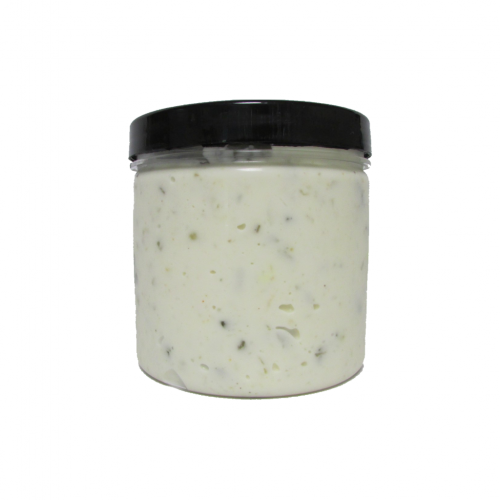
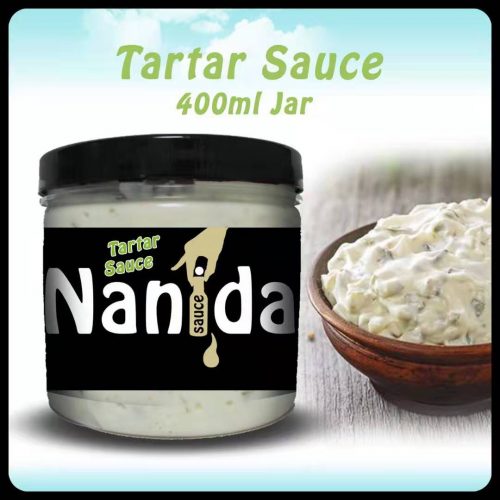 Tartar sauce (French: sauce tartare; also spelled Tartare sauce in the UK, New Zealand, Australia, South Africa, and other parts of the Commonwealth) is a condiment made of mayonnaise, chopped pickles, capers and herbs such as tarragon and dill. Tartar sauce can also be enhanced with the addition of gherkins, other varieties of pickles, and lemon juice as well as herbs such as parsley. It is most often used as a condiment with seafood dishes such as fish and chips, clam strips, fried oysters, fish sandwiches, and fish fingers, among many other dishes.
Tartar sauce (French: sauce tartare; also spelled Tartare sauce in the UK, New Zealand, Australia, South Africa, and other parts of the Commonwealth) is a condiment made of mayonnaise, chopped pickles, capers and herbs such as tarragon and dill. Tartar sauce can also be enhanced with the addition of gherkins, other varieties of pickles, and lemon juice as well as herbs such as parsley. It is most often used as a condiment with seafood dishes such as fish and chips, clam strips, fried oysters, fish sandwiches, and fish fingers, among many other dishes. -
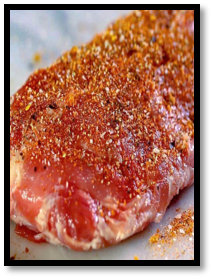

Benefits of Thyme
— Thyme is a very flexible herb that we use almost daily in our kitchens. It’s been shown to be antiaging and good for the heart, colds, colitis, bacterial infections, and ulcers. Black Pepper This unassuming spice actually packs an anti-inflammatory punch. The distinctive flavor of black pepper comes from the chemical piperine. Even at low doses, piperine has been shown to reduce inflammation. It can inhibit the spread of cancer and has been shown to suppress the perception of pain and arthritis symptoms. -

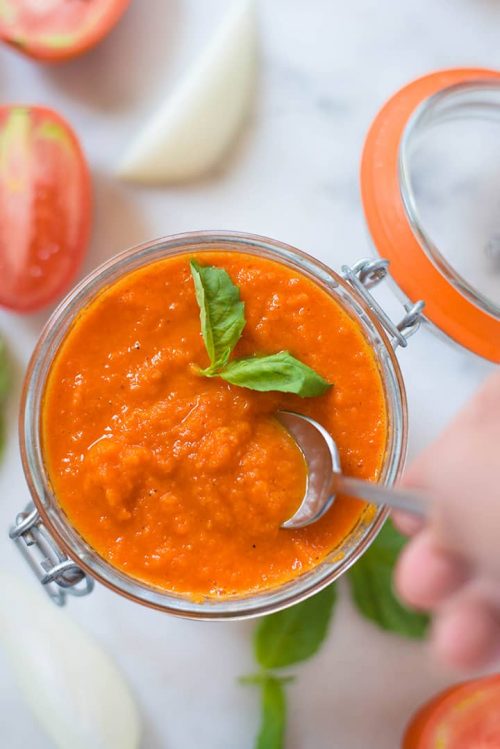 This hearty meat sauce can be served as-is over pasta, blended with par-cooked pasta and baked with a cheesy topping, or used as the meat layer in a lasagna. The sauce should be steaming but not boiling. Really you do not need to cook the sauce. The sauce just needs to be warm like the noodles. Otherwise it could be eaten cold.
This hearty meat sauce can be served as-is over pasta, blended with par-cooked pasta and baked with a cheesy topping, or used as the meat layer in a lasagna. The sauce should be steaming but not boiling. Really you do not need to cook the sauce. The sauce just needs to be warm like the noodles. Otherwise it could be eaten cold.



